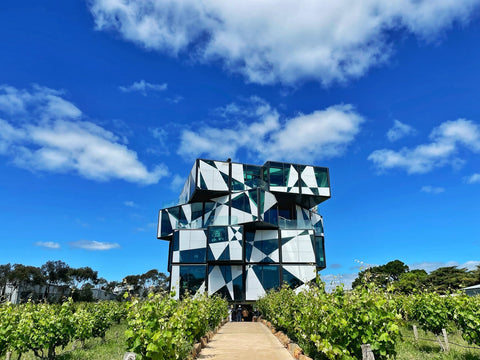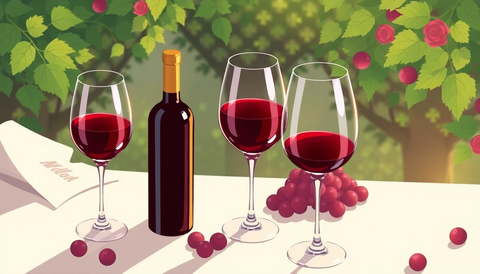The Enchanting World of Wine: A Journey Through History, Varieties, and Appreciation
Wine. The very word conjures images of clinking glasses, celebratory toasts, and intimate dinners. But beyond its social allure, wine boasts a rich history, a dazzling array of flavors, and a complex world of appreciation waiting to be explored. Whether you're a seasoned oenophile or a curious beginner, this guide will uncork the essence of what makes wine so captivating in 2025.
A Toast to History: Wine's Ancient Roots
The story of wine is as old as civilization itself. Evidence suggests that winemaking began as far back as 8,000 years ago in the Caucasus region (modern-day Georgia). From ancient Egypt, Greece, and Rome, where wine was not just a beverage but a vital part of religious ceremonies, medicine, and daily life, its influence has spread across the globe. Roman legions carried grapevines with them, seeding vineyards throughout Europe, laying the groundwork for the world's most renowned wine regions we know today, like Bordeaux and Tuscany.
The Grape Escape: Understanding Wine Varietals
At its heart, wine is made from grapes, but the sheer diversity of grape varietals is astounding. Each grape brings its unique characteristics to the final bottle, influencing color, aroma, flavor, and body. Here are some of the most prominent:
- Red Grapes: Cabernet Sauvignon, Merlot, Pinot Noir, Syrah/Shiraz, Zinfandel. These grapes are known for producing wines with varying degrees of tannin, acidity, and fruit-forward notes, ranging from light and fruity to bold and complex.
- White Grapes: Chardonnay, Sauvignon Blanc, Riesling, Pinot Grigio/Gris, Gewürztraminer. White wines can be crisp and zesty, rich and buttery, or sweet and aromatic, offering a spectrum of refreshing and delightful profiles.
- Rosé Wines: Made from red grapes with limited skin contact, rosés offer a delightful pink hue and a balance of red fruit aromas with a crisp, refreshing palate.
- Sparkling Wines: Champagne, Prosecco, Cava, and others, characterized by their effervescence, perfect for celebrations and aperitifs.
Terroir: The Soul of Wine
One of the most fascinating aspects of wine is the concept of 'terroir'. This French term encompasses all the environmental factors that affect a crop's phenotype, including climate, soil, topography, and even the surrounding flora and fauna. It's believed that terroir imbues a wine with a unique sense of place, reflecting the specific vineyard where the grapes were grown. A Cabernet Sauvignon from Napa Valley will taste distinctly different from one grown in the Médoc region of Bordeaux, even with the same grape varietal.
Decoding the Label: Navigating Wine Information
Wine labels can seem daunting, but they are a treasure trove of information. Key elements to look for include:
- Region/Appellation: Indicates the geographical origin, often signifying quality standards (e.g., AOC in France, DOCG in Italy).
- Vintage: The year the grapes were harvested. Crucial for understanding the wine's age and potential for aging.
- Grape Varietal: The primary grape(s) used in the wine.
- Producer: The winery that made the wine.
- Alcohol Content: Usually expressed as % ABV (Alcohol by Volume).
The Art of Wine Tasting: Engaging Your Senses
Wine tasting is a sensory experience that can be broken down into distinct steps:
- Look: Observe the wine's color, clarity, and viscosity (legs).
- Smell: Swirl the wine to release aromas, then inhale deeply. Identify notes like fruit, floral, earthy, or spicy.
- Taste: Take a sip, letting it coat your palate. Notice the acidity, tannins, sweetness, body, and flavors. Consider the finish – how long the taste lingers.
- Conclude: Form an overall impression of the wine's balance, complexity, and enjoyment factor.
Pairing Perfection: Wine and Food Harmony
The magic of wine is often amplified when paired with food. While there are countless guidelines, the most important rule is to drink what you enjoy. However, some classic pairings include:
- Red Meat: Bold reds like Cabernet Sauvignon or Malbec.
- Seafood: Crisp whites such as Sauvignon Blanc or Pinot Grigio.
- Poultry: Versatile whites like Chardonnay or lighter reds like Pinot Noir.
- Spicy Food: Off-dry Riesling or Gewürztraminer to balance the heat.
- Cheese: A wide range, from bold Cheddar with robust reds to creamy Brie with sparkling wines.
Exploring Wine in 2025 and Beyond
The world of wine is constantly evolving. In 2025, we're seeing a growing interest in sustainable and organic winemaking, natural wines with minimal intervention, and a continued exploration of lesser-known grape varietals and regions. Online resources, wine apps, and virtual tastings have made learning and discovering wines more accessible than ever before. Whether you're attending a local wine festival, exploring a vineyard tour, or simply enjoying a bottle at home, the journey into wine is one of continuous discovery and delight. So, raise a glass and savor the experience!




Comments (0)
There are no comments for this article. Be the first one to leave a message!